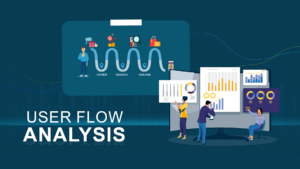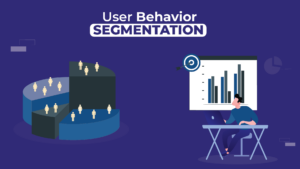
Customer Lifecycle Vs Customer Journey – What’s The Differences
Customer Lifecycle Is a Complete Cycle of the Customer with the Business whereas Customer Journey focuses on specific paths or interactions. Assume a customer lifecycle

What steps are involved in the product management process? What stages are there? Why is it crucial that product managers adhere to them?
Remember! It doesn’t necessarily follow that a great idea will result in a wonderful product. Not all ideas are excellent right off the bat. Keeping these axioms in mind, product management is crucial in bringing chaos under control and ultimately bringing products to market.
Just a few of the issues we’ll discuss in this post are those mentioned above, so grab something to drink, settle in, and let’s get started!
Product management means the process of designing, developing, and launching new products that satisfy consumer needs and demands. The product management process refers to the process of launching a new product with features or improving an already existing one.
If you want to develop the best product with core features that satisfy your customers’ expectations, you need to use an efficient product management process. Communication with stakeholders from many teams, including engineering, design, sales, and marketing, are all parts of the project management process.
In this section, you will get the 7 sequential stages of the product management process. Depending on the project you’re working on, the product management cycle may change.
It can be divided into the following general stages: idea sourcing, idea screening, market and user research, strategy formulation, product creation, testing and feedback collection, and product upgrades.
So, let’s explore the core product management life cycle stages.
This is one of the first steps in the product management process. The success of your business and product depends on market research. It first enables you to assess the market position, competition activity, market trends, and any potential gaps your product might fill.
Additionally, it assists you in recognizing threats and devising countermeasures, as well as opportunities and how to take advantage of them. It also helps you better grasp the needs of your future customers. After all, the foundation of product-led growth is meeting consumer needs.
In order to obtain the information you need, primary research entails gathering the data from scratch. It might originate from qualitative sources like in-depth interviews or focus groups as well as quantitative sources like surveys or questionnaires.
On the other hand, secondary research makes use of data that is already in circulation, such as statistics, industry standards, or scholarly studies.
New idea generation is not extremely challenging. Anyone can experience inspiration at any time. Additionally, there are several methods for finding them, like brainstorming sessions, client interviews, and monitoring your competitors.
You can begin developing the solutions once you have a general understanding of the market environment and the wants of your clients. But it goes much beyond simple brainstorming. You must take a methodical approach to it.
Work carefully through the opportunities and solutions for each one using the opportunity solution tree. Make a plan for how you will test each of them. Prioritize the concepts that will add the most value at each stage.
Once an idea has been written down and categorized, it’s time to work out some of the specifics. Several objectives will be met, and these will be important later on in the product management process.
Specifications for products should be succinct, not excessively technical papers that address three key issues:
Teams should work together to find the answers to these questions with input from a variety of stakeholders in order to take into account all possible scenarios and guarantee that everyone is on the same page moving ahead.
In this stage, you need to create a clear and concise roadmap. Avoid creating a roadmap that is overly detailed. Use it to communicate the product vision and your strategic and business objectives rather than concentrating on specific features.
You will have more future flexibility with such a strategy. Focusing on the overarching goals and your North Star measurements shows that you are aware of the direction the product is going but also that you are aware that there may be alternative approaches.
Moreover, these depend on the knowledge you get during the ongoing process of product development. Your planning may get more precise and detailed as more data become available. The concept of having two roadmaps is an excellent one.
The development team is guided by an internal roadmap with a comprehensive backlog, while the external roadmap serves the users’ interests by letting them know what features are in the works.
It’s now time to choose which of those backlog items deserves to be removed and move past the idea stage. Here, one of the various prioritizing frameworks on the market can be useful.
This exercise indicates which items should be worked on first based on how they’ll impact the product’s vision, strategy, and KPIs, whether utilizing the user-favorite product tree or a scoring model like RICE.
Any activity in setting priorities should always involve a wide range of stakeholders, taking into account various points of view.
The code, which is the essential component of the product, is developed at this step. Moreover, the key participants are the developers, who may have contributed to the definition of technical specifications.
Members of the same multidisciplinary team carry out both development and testing in agile teams. They can avoid handover delays and enable speedier release cycles as a result.
The product manager is busy organizing the product launch while the developers are busy writing code.
Product analytics provide a new chance for learning once the product is put into the open (or even as a limited beta), thanks to the deluge of user data available when products are properly instrumented to gather it.
This information can be used to infer connections, causes, and correlations, which can be immensely informative. At this point, product management can take a few significant actions. They can first see which habits influence the important KPIs that the firm values.
For instance, if conversion is crucial, they can examine what the majority of users do before making a purchase. They can also look for characteristics such cohorts share if adoption and widespread use are the desired outcomes.

According to statistics, “Over 30,000 new items are created annually and 85% of them fail.” There are a variety of causes for this, but one of the most important is that there are too many products that are not adequately prepared for the market.
Financial losses frequently result from neglecting one part of product development and placing an excessive amount of emphasis on the other.
It is feasible to avoid such repercussions and raise the likelihood that the product will be successful on the market with good product management

Customer Lifecycle Is a Complete Cycle of the Customer with the Business whereas Customer Journey focuses on specific paths or interactions. Assume a customer lifecycle

Welcome to the world of user activation software, where the secret sauce to unlocking the full potential of your product or service lies. In this
Have you ever wondered how businesses track user actions on their websites or apps? How do they measure the success of their marketing campaigns and

Have you ever wondered how users navigate through websites or apps? How do they seamlessly move from one screen to another, making decisions and accomplishing

Do you want to create a product that truly speaks to your customers? Are you looking for ways to gather valuable feedback and improve the

Ever wondered how often customers visit your online store before making a purchase? Or which promotional messages drive higher-value sales? User behavior segmentation holds the
Join companies that have successfully reduced their churn rate by up to 40% using StatWide’s predictive analytics.